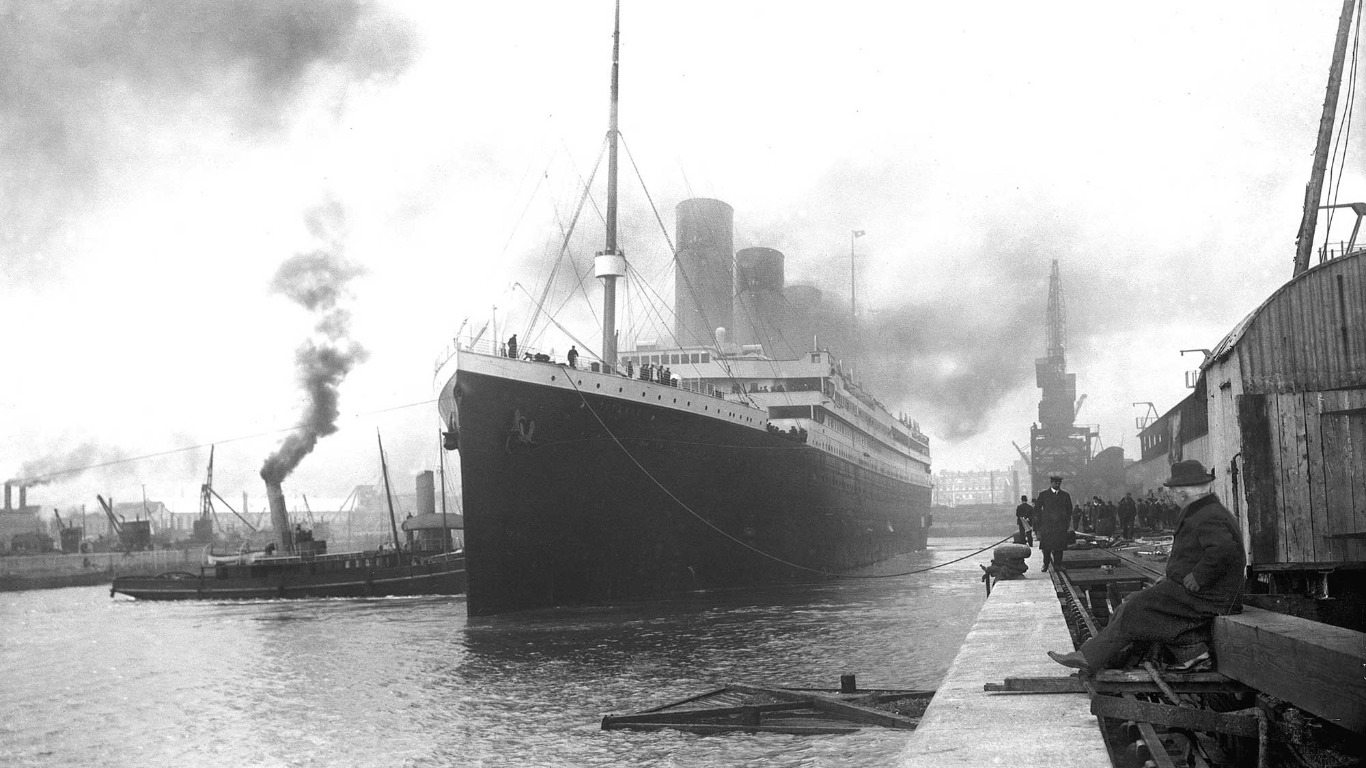On the Titanic trail in Southampton
While the RMS Titanic might have been conceived in London and built in Belfast, it was from Southampton, England, that she started her only voyage in April 1912. Today, the influence of this short-lived behemoth can still be felt in the south-coast city with memorials and stories around every corner. loveEXPLORING’s editor and life-long enthusiast Laura Jackson spends 48 hours on the Titanic trail.
Southampton's Titanic history
I’ve never given much thought to how difficult it would have been to steer RMS Titanic – but it turns out pretty darn hard. Navigating the ship along Southampton Waters at SeaCity Museum’s 'Sail The Titanic' exhibit sees me and the 53,000-tonne vessel in trouble in two minutes flat.
As Titanic leers into the Solent’s shallow waters I spin the wheel hard starboard and yank the brass handle of the engine order telegraph down from full ahead, to half ahead and then to slow.
But it’s too little, too late. I run Titanic aground just past West Bramble Buoy, with a soundtrack of seagulls and sloshing water only adding to my seafaring shame.
While the simulation at SeaCity Museum is intended to be fun, it gave me a new appreciation of how impossible it would have been for the Titanic’s crew to change the ship’s course on that calamitous night on 14 April 1912, when she collided with an iceberg in the North Atlantic.
The moment the iceberg punctured a series of holes in Titanic's hull has been felt down the generations, not only for the passengers who lost their lives and their families, but for Southampton as a city too.
Of the 1,500 people who died 685 were crew, and of those 549 were from Southampton.
The point is movingly hammered home by a map of Southampton in the SeaCity Museum that contains a red dot for every life lost on Titanic. Hardly a road in the centre and surrounding suburbs was unaffected.
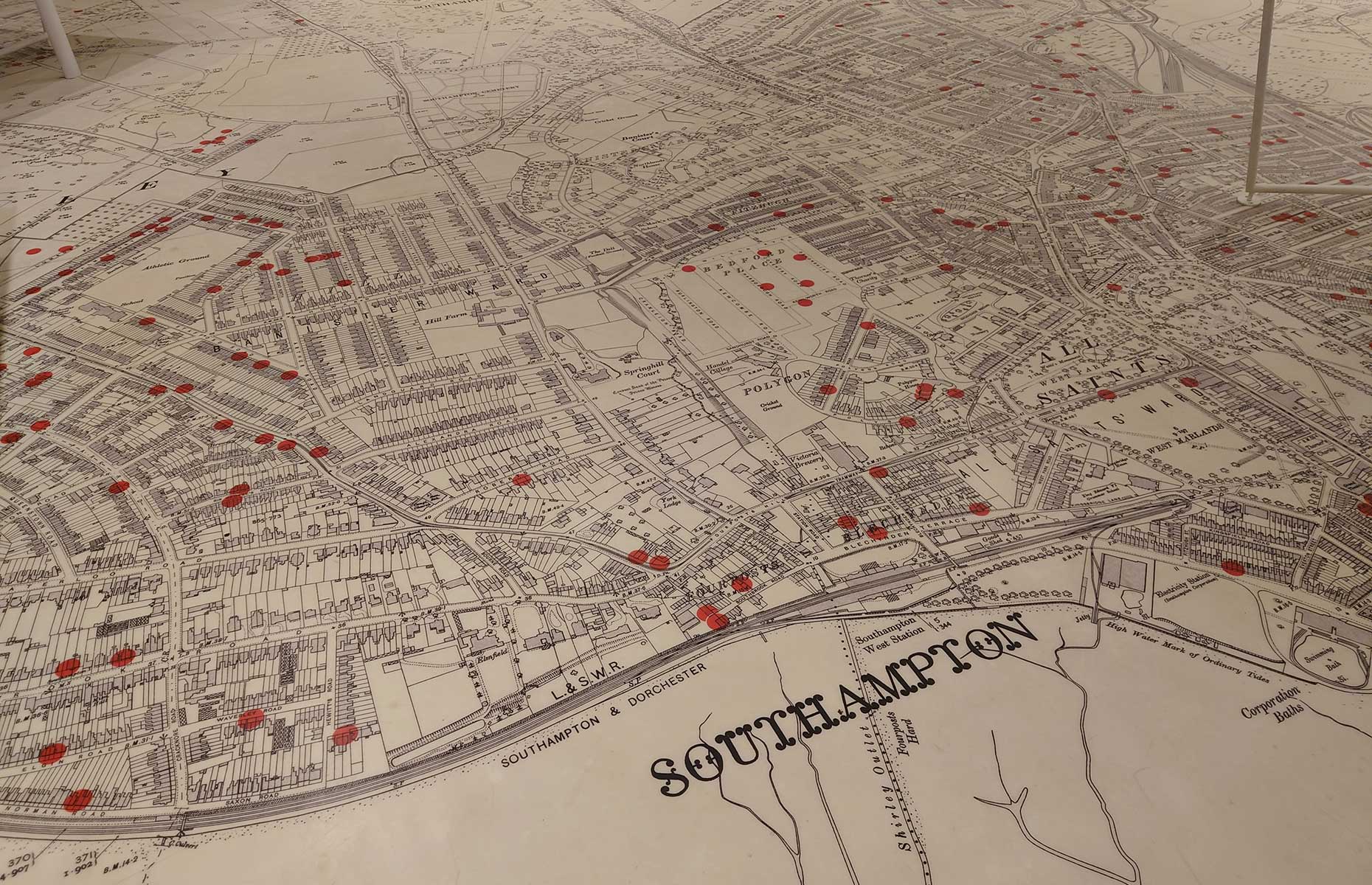 Courtesy of SeaCity Museum
Courtesy of SeaCity Museum
Today, 109 years after the enormous loss of life, there are echoes of Titanic everywhere in Southampton. Even checking into my accommodation isn't without some Titanic trivia as Ennio’s Italian restaurant and boutique hotel was once the Geddes Warehouse where first-class passengers’ luggage was stored before boarding.
Thanks to several fantastic maps, apps and tours, it's possible to tour the city uncovering anecdotes and insights that tell the personal stories of Southamptoners who survived the freezing Atlantic waters and those that tragically didn’t.
READ MORE: See our general city guide to Southampton here
How to do a Titanic tour
A free, print-at-home Titanic trail around Southampton is available from the SeaCity Museum website. It's self-guided with 13 stops and takes around 90 minutes to walk.
The OS also offers A Southampton Story Walking Tour app which costs £5.99 to download.
SEE Southampton tour guides can be booked directly for tours of the city. A guided tour costs £60 per party, enquire at info@seesouthampton.co.uk or on +44 (0)7770 842728.
If you’re on a tight time scale you could zip around the Titanic trail in a couple of hours by yourself, using the map or app. You don’t have to do the trail in a particular order and I wished to spend some time reflecting at each spot so split the main sights over a leisurely two days.
Not only is there lots to learn about Titanic, the trail is a superb way to get under the skin of this maritime city. Plus, it allowed me time to take in Southampton’s modern-day food and drink spots and a few other historic experiences too.
Highlights
South Southampton and the docks
As Ennio’s is on Town Quay facing the docks, I started from my hotel with the cluster of Titanic sights in the southeastern corner of the city.
First stop is Canute Chambers, once the headquarters of the White Star Line. This unassuming building surprised me with its air of a red-brick Victorian primary school and is certainly a more modest building than the Union-Castle Line's HQ along the road, featuring a Neoclassical façade, columns and a cupola. Canute Chambers was where families gathered in the aftermath of the Titanic's sinking waiting for news of the ship to be posted.
 JUSTIN TALLIS/AFP via Getty Images
JUSTIN TALLIS/AFP via Getty Images
Across the street, on north side of Canute Road is South Western House, the first class hotel where White Star Line’s chairman, J Bruce Ismay would have stayed on the eve of Titanic’s departure.
You can’t go inside as the building has been converted into flats, but you can imagine the White Star Line's dignitaries rolling out of the hotel to nearby Berth 44 where the Titanic was docked on the morning of 10 April 1912 – their luggage having been transported from the Geddes Warehouse first, of course.
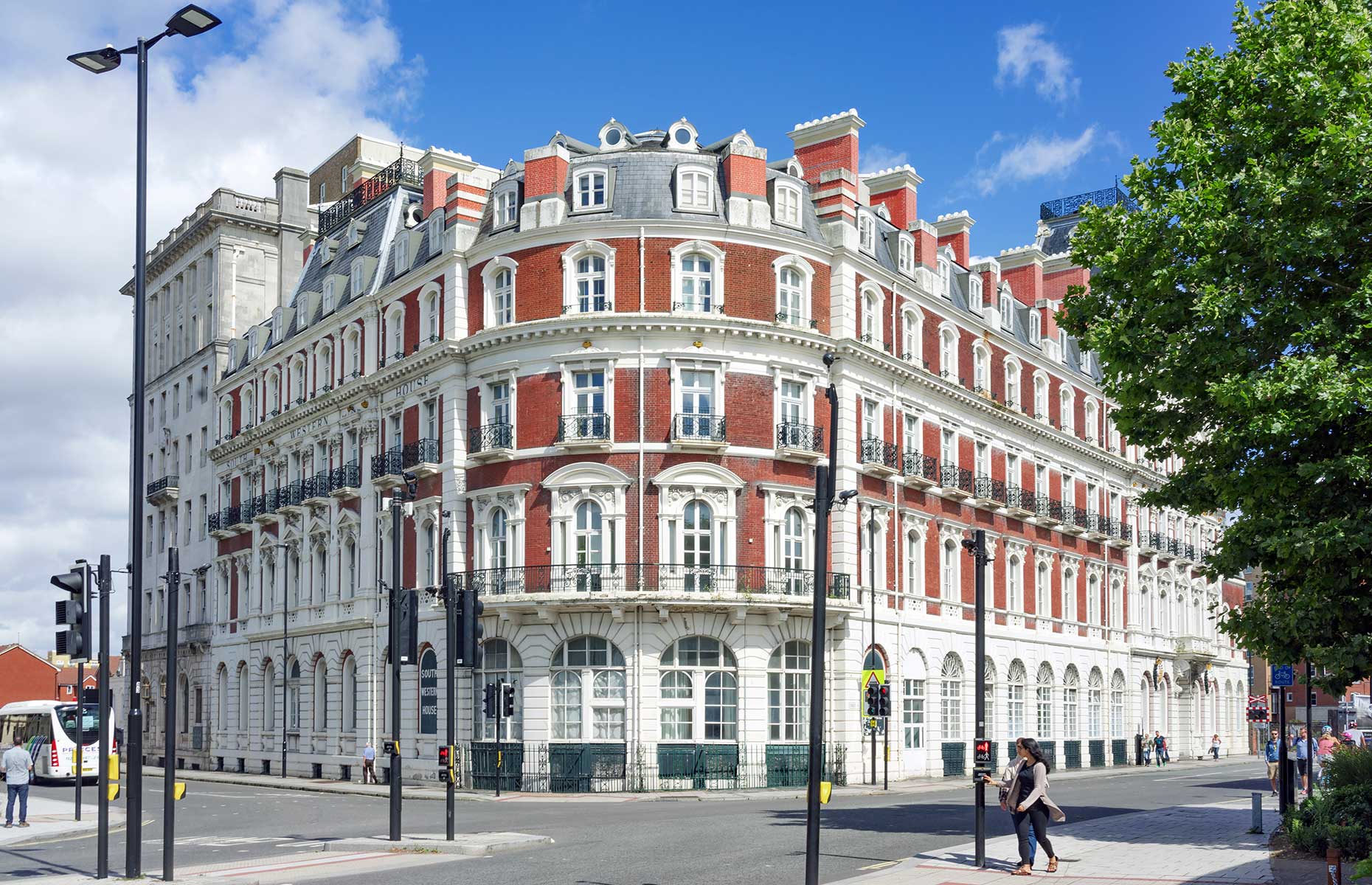 Sterling Images/Shutterstock
Sterling Images/Shutterstock
Elegant Oxford Street, five minutes' walk further north, with its Georgian buildings boasting bulging bay windows, offers two important sites. Today the former Sailors' Home at number 57 is owned by the Salvation Army, but some of the Titanic’s crew who didn’t live in Southampton would have lodged here the night before the sailing.
A little further east along Oxford Street, a Titanic mural confirms you're in the right place for The Grapes public house.
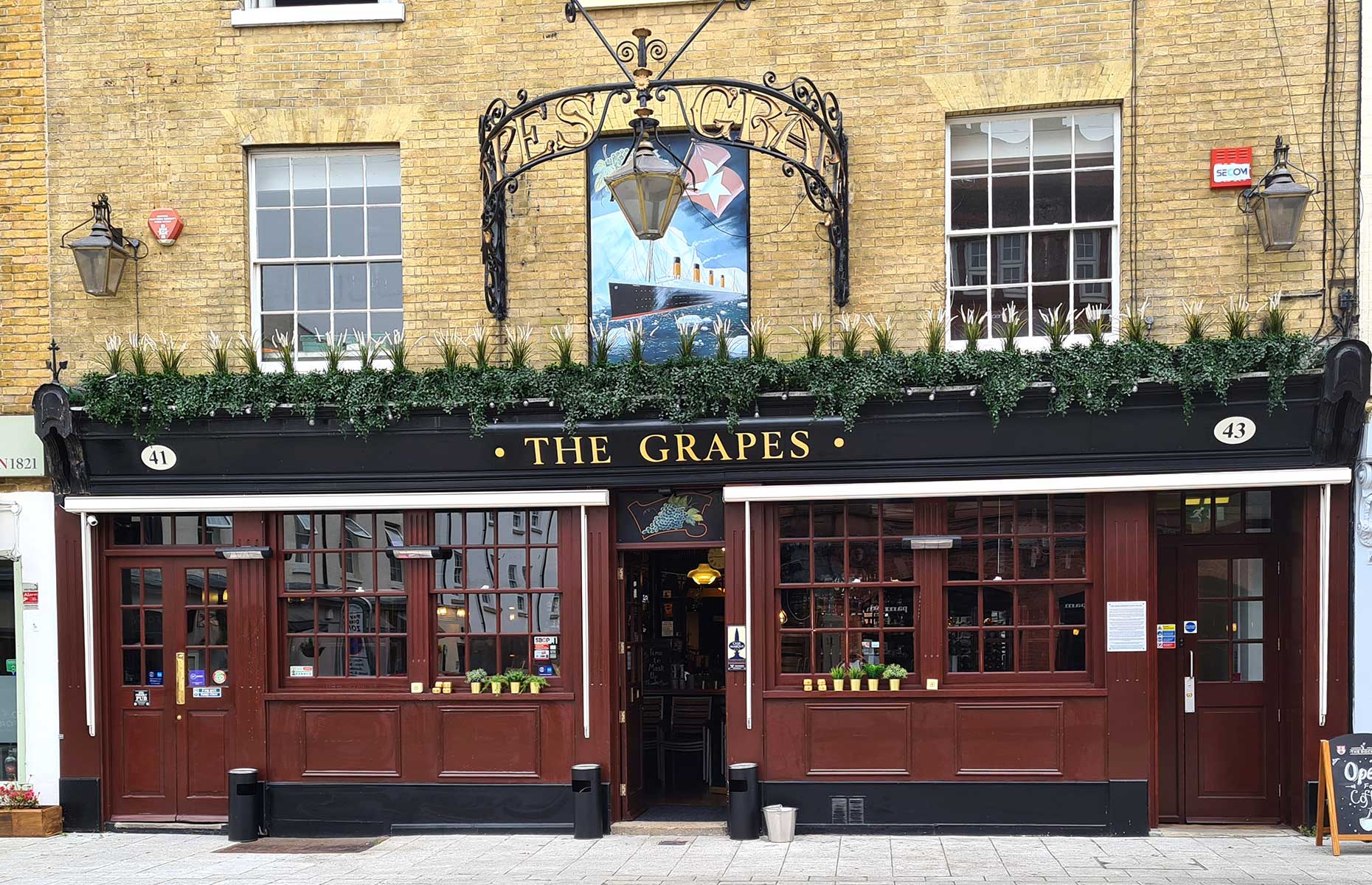 Normancbc/CC BY-SA 4.0/via Wikimedia Commons
Normancbc/CC BY-SA 4.0/via Wikimedia Commons
Open Wednesdays to Sundays The Grapes is a proper old-fashioned dockers boozer, where you can knock back a pint of Ale of Wight and learn about the fate of three brothers, Tom, Alfred and Bertram Slade. They were all supposed to join Titanic’s crew and were having 'one for the road' in The Grapes before the ship was due to leave.
The Slade brothers never set foot onboard due to a train that blocked their path into the dockyard and their jobs were given to other men waiting for a last-minute opportunity. Proof of the life-saving power of a pint.
Much of the original memorabilia at The Grapes was sold before the current landlord Paul took over in 2011, but there remains an impressive original deck plan framed on the wall at the back, making this spot the top seat in the house.
Sadly, there’s no public access to Berth 44 at the docks – the exact spot the Titanic left from. Unless you have a ticket for a cruise ship voyage you can’t get through Dock Gate 4 onto Ocean Road. Renamed as Ocean Dock, Berth 44 is in use today and when I visited a luxury private yacht was taking the spot.
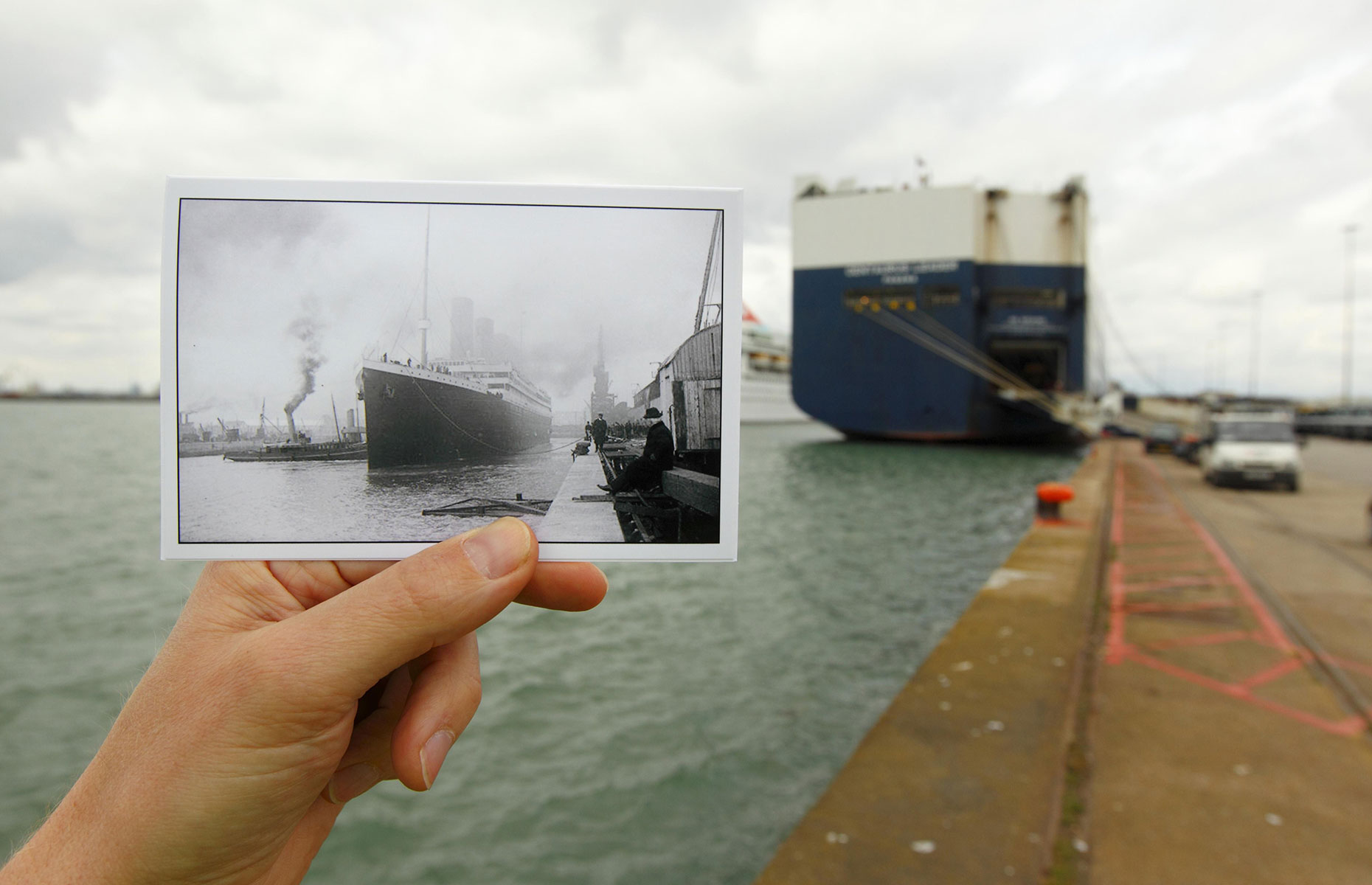 Chris Ison/Alamy
Chris Ison/Alamy
North Southampton
On day two of my tour, I enlisted the help of Nigel Philpott, one of Southampton's Green Badge guides who showed me the top Titanic spectacles in the north of the city.
Furthest north is the Musicians’ Memorial on Cumberland Place. While the original was destroyed in the blitz, the replacement plaque honours band leader Wallace Hartley and the other seven musicians who all went down with the ship. The first line of the hymn Nearer My God To Thee, said to be the last music they played, is part of the inscription.
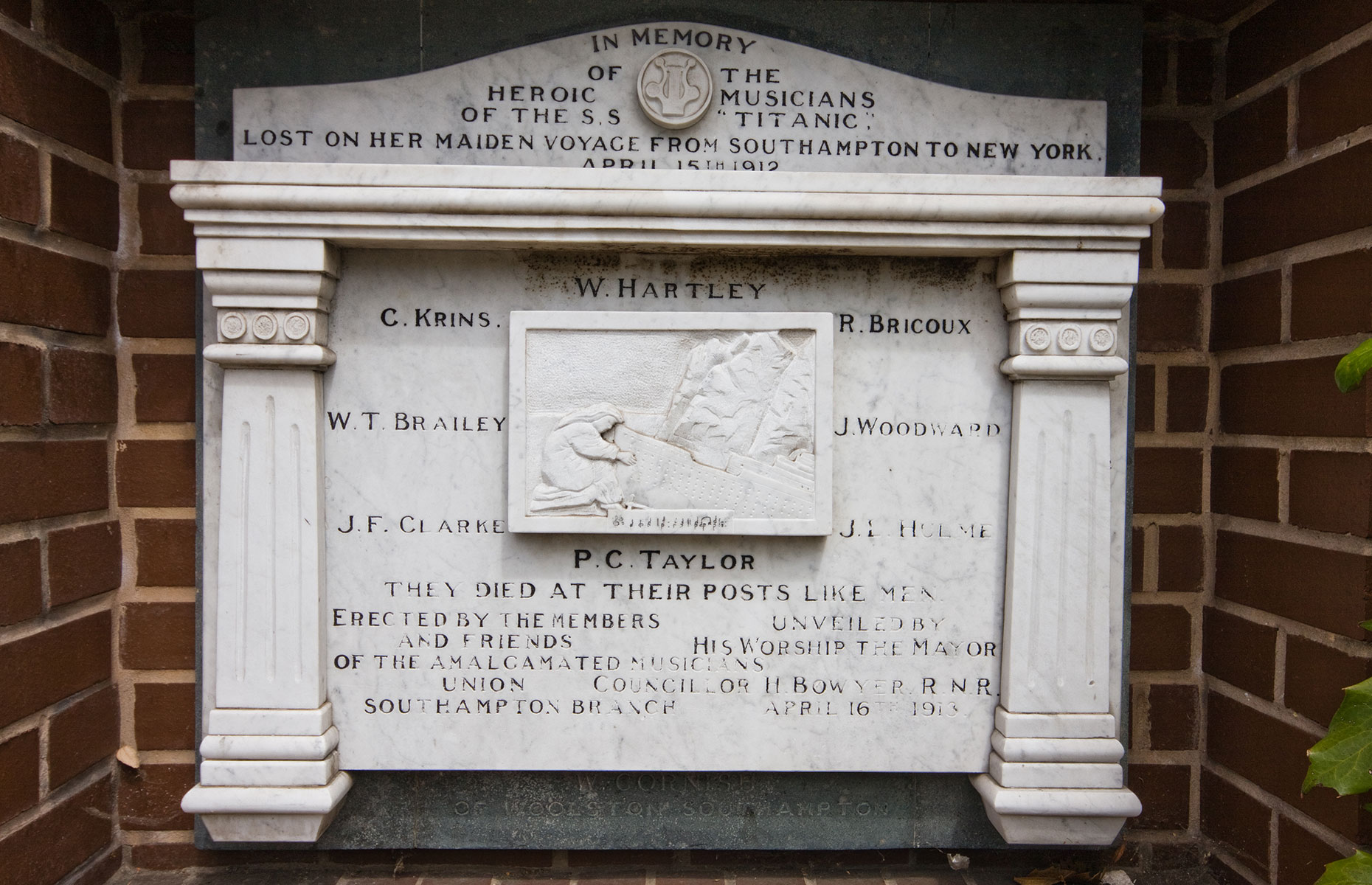 Scotshot/Shutterstock
Scotshot/Shutterstock
Almost opposite Southampton’s cenotaph is the Titanic Engineer Officers’ Memorial, featuring the winged goddess Nike.
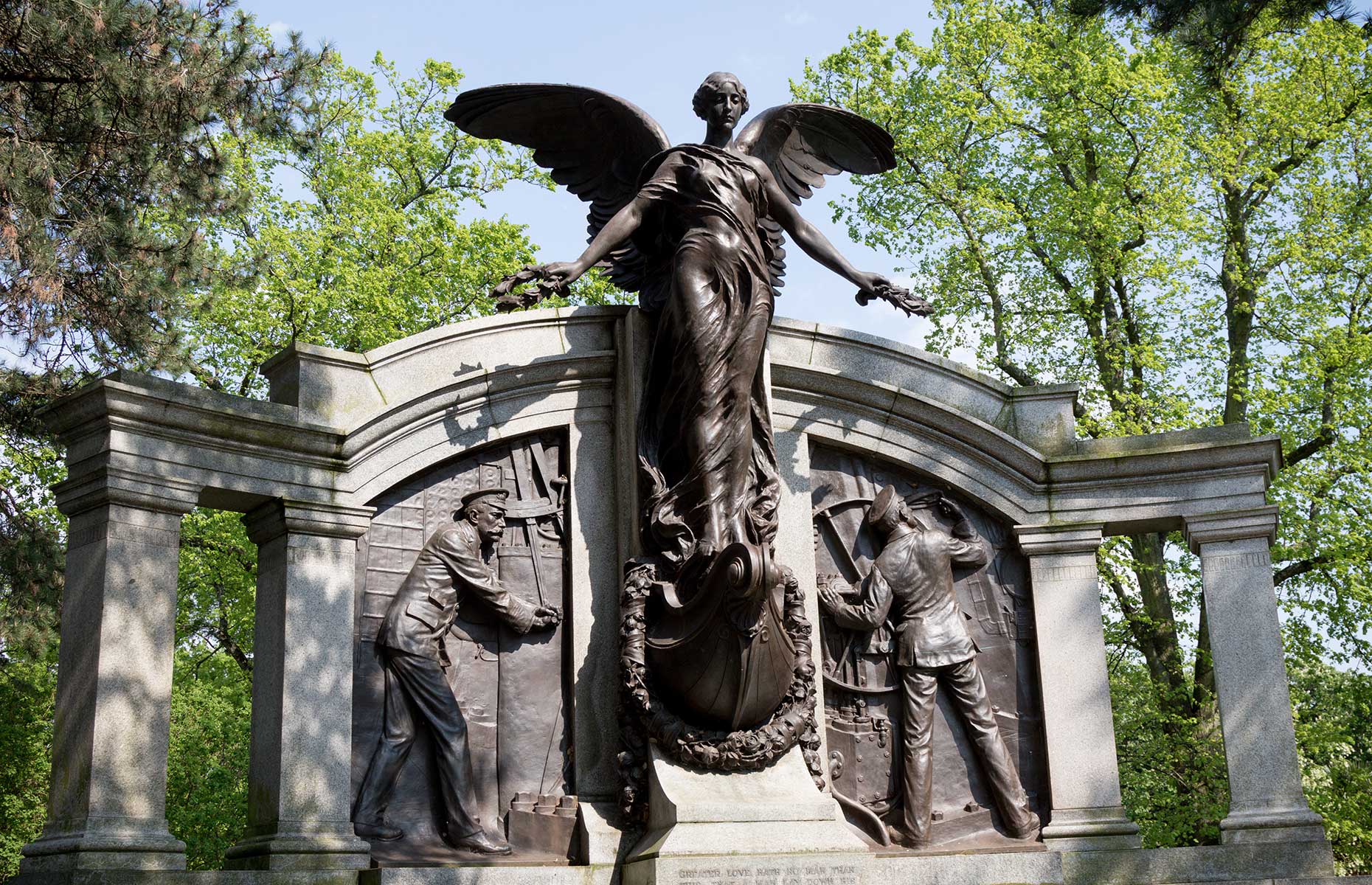 Ben Gingell/Shutterstock
Ben Gingell/Shutterstock
“The story goes this memorial inspired the scene in the film Titanic where Rose and Jack stand on Titanic's bow for the ‘I’m flying’ moment,” Nigel tells me.
Whether true or not, the Titanic's engineers, mostly Southampton men, worked until the last moment to keep the ship's lights on to help with the evacuation.
Old town
Although heavily damaged in the blitz, the historic heart of Southampton in the Old Town has retained glorious historic buildings including the medieval Bargate, the 14th-century city walls and the Tudor House & Garden.
But it was the Titanic Crew Memorial I was here to see. Constructed in 1915 and originally a drinking fountain, the monument was moved to the ruins of Holyrood Church in the early 1970s.
Located just off the High Street, the 14th-century church celebrates the seamen of the Merchant Navy. You can see the letters MN in the ironwork above the main gate.
"For many men being part of the Titanic's crew wasn't about the prestige of this fancy new ship," Nigel tells me. "Thousands of people were out of work in Southampton in 1912, made worse by the coal strike that year. Many seamen would have taken the job out of sheer desperation to earn a living."
The leafy churchyard was certainly a poignant final stop to reflect on the 549 people who left Southampton on 10 April 1912 and never returned home.
READ MORE: See period photos of the Titanic here
SeaCity Museum
Titanic anoraks of all ages should devote a whole afternoon to the dedicated exhibition at the SeaCity Museum, one of the significant points on the trail.
Give your biceps a workout as you shovel coal, have a crack at learning Morse code and also steer the Titanic (hopefully more skillfully than me).
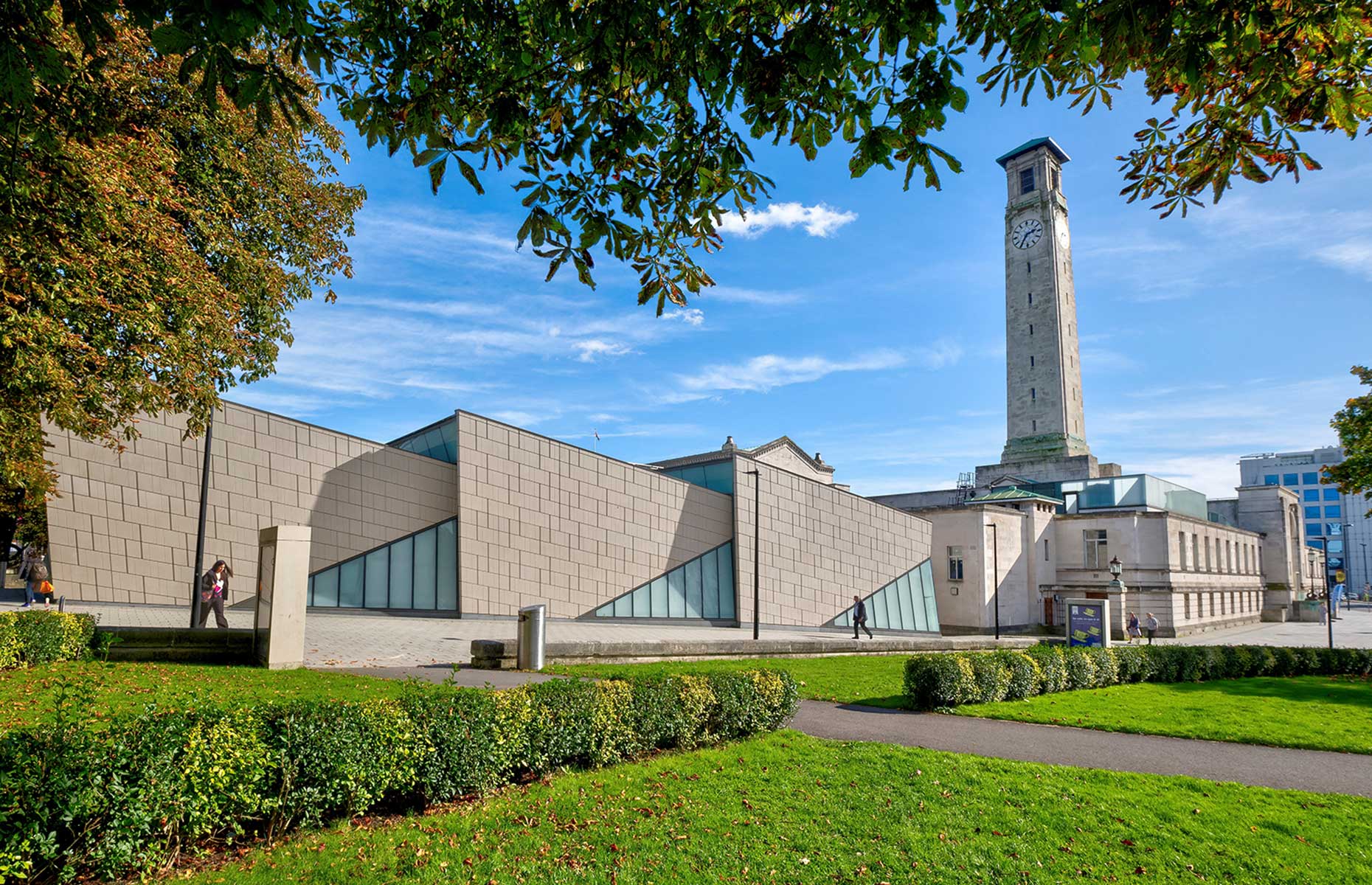 Courtesy of Visit Southampton
Courtesy of Visit Southampton
There are many items from the Titanic itself, including a second class breakfast menu (Yarmouth bloaters, anyone?) and the plaster moulding from the top of the grand staircase of the Titanic’s sister ship, the Olympic.
You can follow the stories of local crew members including Captain Smith – he lived on Winn Road, Southampton – and Mabel Bennett, a stewardess in first class, which are sensitively told through artefacts and written displays.
Even if you're not a Titanic geek you can't fail to be moved by the video room featuring testimonials from Southampton's survivors, interviewed in the 1980s and 1990s. They include passenger Eva Hart, seven-years old at the time of the sinking and Sidney Daniels, who was an 18-year old steward.
TOP TIP: Don't skip the museum shop. There's a small collection of hard-to-find Titanic books among the themed fridge magnets, mugs, tote bags and, for the serious collector, salt and pepper shakers.
Where to eat and drink
Southampton has exciting and great-value places to refuel during your stay. Here are our top picks:
Lunch at: Banana Wharf. Located on the marina, Banana Wharf is the place for American-sized portions of everything from the blow-your-head off Chilli Chilli burger to daily specials such as a silky salmon, crab and prawn pasta alfredo.
Dinner and drinks at: HarBar on 6th. With panoramic views over Southampton's ocean village from the floor-to-ceiling windows or the balcony, HarBar is the perfect place to start the evening. A glass of Champagne or one of the innovative cocktails like the Charlie Spencer with sloe gin, apricot brandy and almond sweet wine is recommended, but it’s the confit duck pizza that’s really show-stopping here.
Breakfast at: Ennio’s. This is a great dinner option too, but breakfast is magnificent. Hoover up a plate of eggs benedict with trout and some serious coffee before hitting the Titanic trail.
Other activities
There's no finer way to explore Southampton's maritime heritage than with a trip out on the water itself.
The SS Shieldhall was built in the 1950s in Glasgow and was taken out of active service as 1976 as a sludge boat on the River Clyde. She's is now permanently based in Southampton.
The largest working steamship in Northern Europe, excursions onboard SS Shieldhall can last for two hours to the whole day with trips running from June to September.
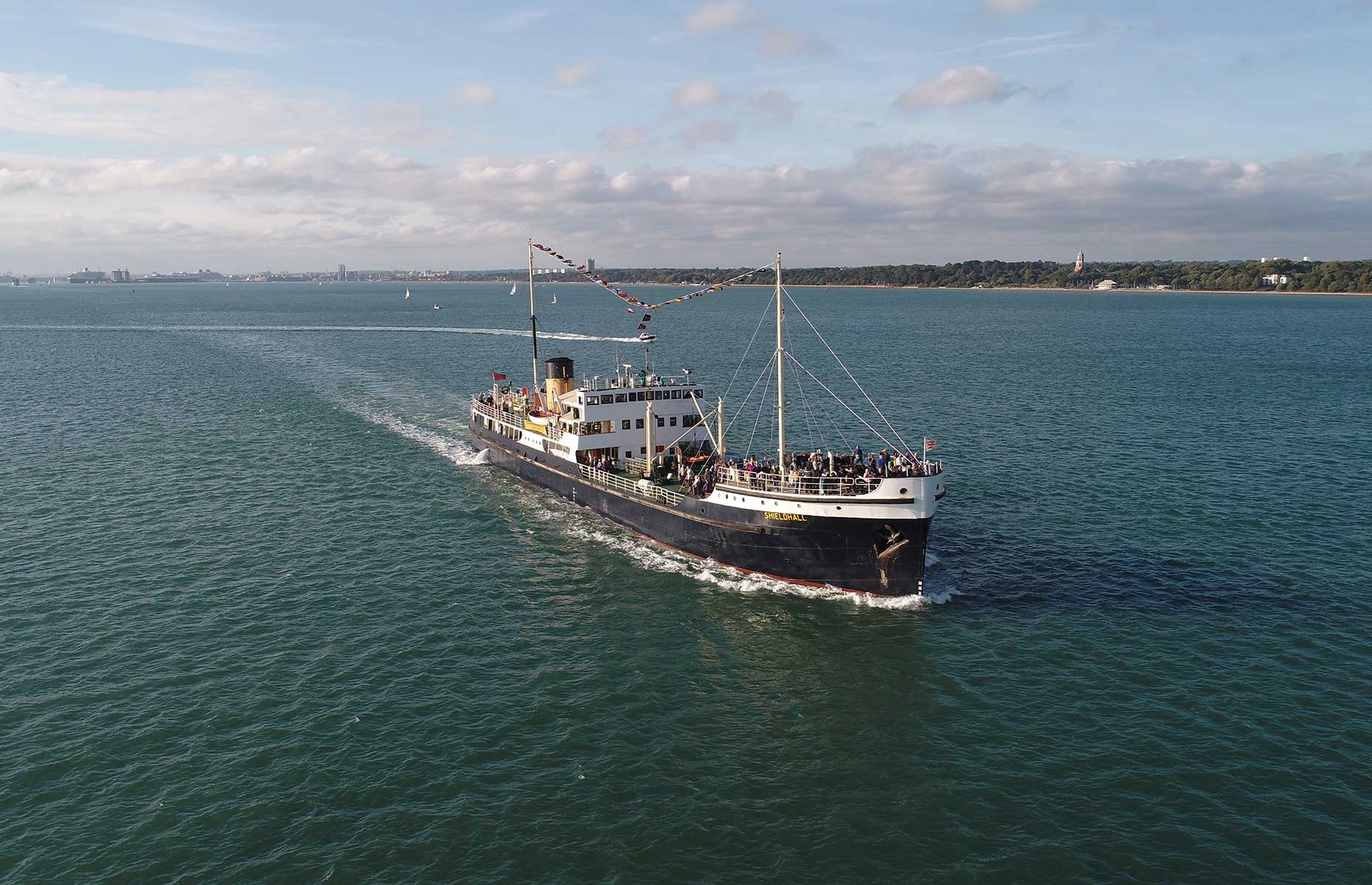 Andy Amor/SS Shieldhall
Andy Amor/SS Shieldhall
If attempting to sail the Titanic down the Solent isn't enough action, you can navigate Southampton Waters in real life with water sports specialists Nomadic. They offer stand-up paddleboarding for beginners from £50 a session.
Booking
Find out more about what to see and do in the city at Visit Southampton.
A night’s stay at Ennio’s with breakfast starts from £115 for two.
 Courtesy of Ennio's
Courtesy of Ennio's
Map: Southampton's top Titanic spots
Comments
Be the first to comment
Do you want to comment on this article? You need to be signed in for this feature
